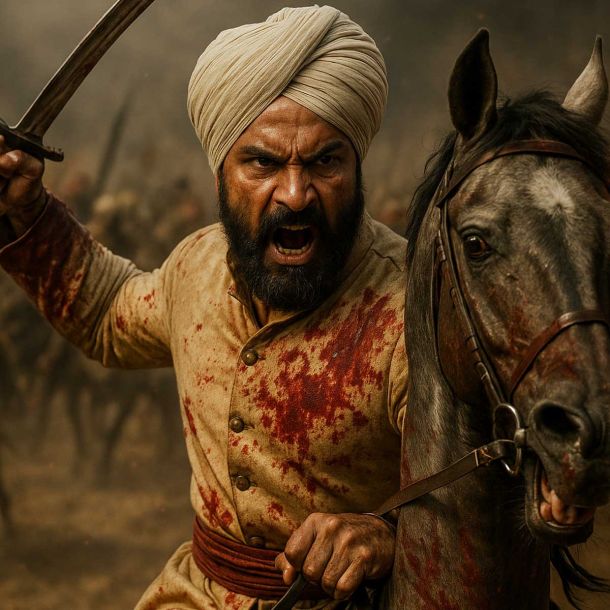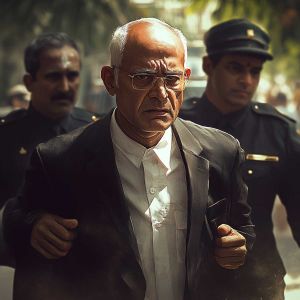Sanatan Articles
Satyaagrah
Written on
Satyaagrah
Written on
Satyaagrah
Written on
Satyaagrah
Written on
Satyaagrah
Written on
JOIN SATYAAGRAH SOCIAL MEDIA
Godse's speech and analysis of fanaticism of Gandhi: Hindus should never be angry against Muslims
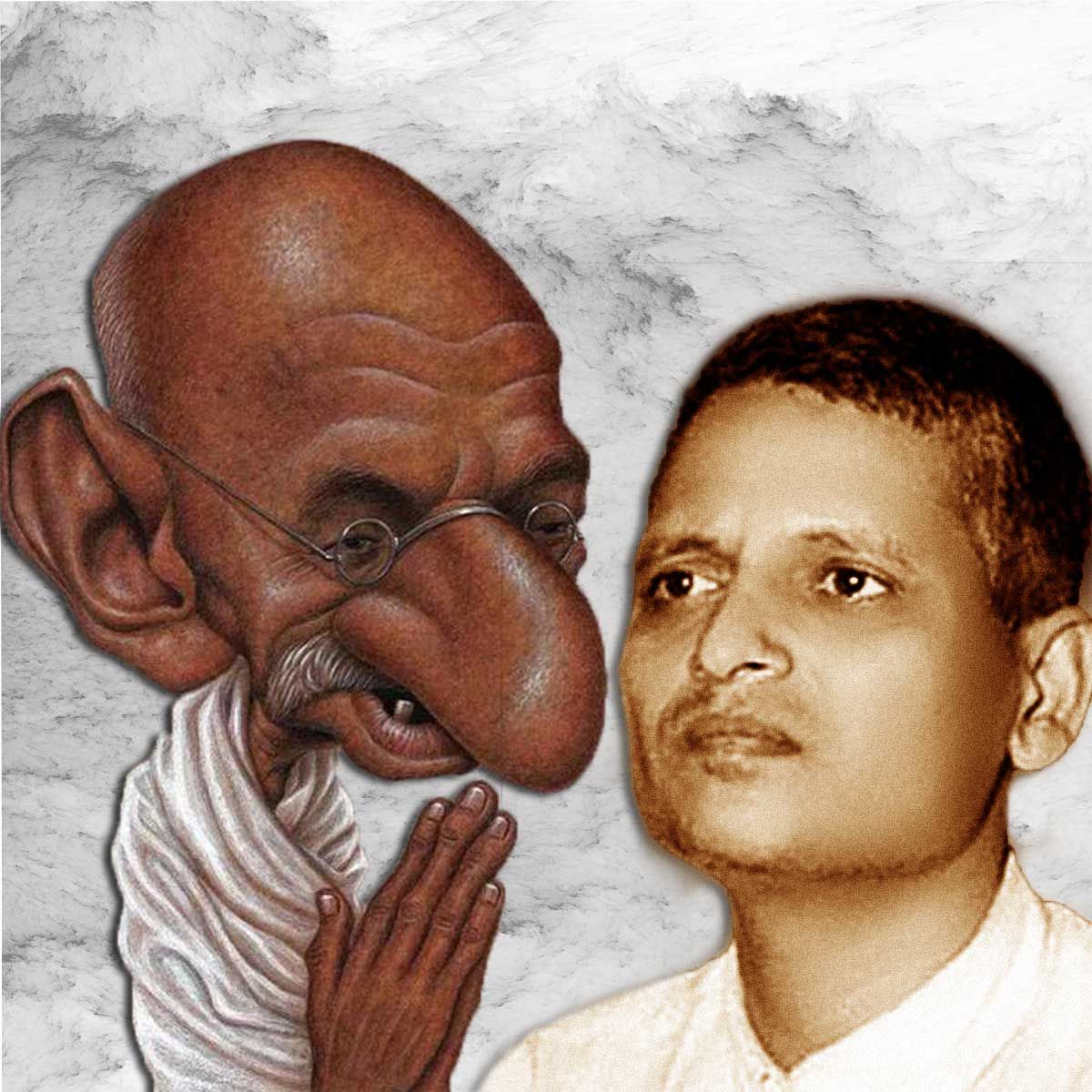
Very little is known or spoken about the actual views and opinions of Mohandas Karamchand Gandhi’s assassin and discussion surrounding him relegated to calling him a monster and a bigot or a Hindu terrorist. In this article, we shall discuss non-violence as preached by Gandhi, from the perspective of Koenraad Elst and his analysis of the courtroom speech of Nathuram Godse on the issue of Gandhian nonviolence.
Koenraad Elst
(°Leuven 1959) distinguished himself early on as eager to learn and to dissent. After a few hippie years he studied at the KU Leuven, obtaining MA degrees in Sinology, Indology and Philosophy. After a research stay at Benares Hindu University he did original fieldwork for a doctorate on Hindu nationalism, which he obtained magna cum laude in 1998. As an independent researcher he earned laurels and ostracism with his findings on hot items like Islam, multiculturalism and the secular state, the roots of Indo-European, the Ayodhya temple/mosque dispute and Mahatma Gandhi's legacy. He also published on the interface of religion and politics, correlative cosmologies, the dark side of Buddhism, the reinvention of Hinduism, technical points of Indian and Chinese philosophies, various language policy issues, Maoism, the renewed relevance of Confucius in conservatism, the increasing Asian stamp on integrating world civilization, direct democracy, the defence of threatened freedoms, and the Belgian question. Regarding religion, he combines human sympathy with substantive skepticism.
 |
Why Gandhian non-violence was a failure- Godse and Elst
“On the issue of non-violence, not Godse but Gandhi was the fanatic.” says Koenraad Elst in his book ‘Why I killed the Mahatma’. In the book, Elst presents an analysis of Nathuram Godse’s courtroom speech, where Godse presents his plea to the Indian judiciary. One of the issues which Nathuram Godse extensively covers in his speech is the issue of non-violence and Gandhi’s mishandling of the same.
In Godse’s speech, paragraph 56, he says ‘(…) Since the year 1920, that is to say after the demise of Lokmanya Tilak, Gandhiji’s influence in the Congress first increased and then became supreme. His activities for public awakening were phenomenal in their intensity and were reinforced by the slogan of truth and non-violence which he ostentatiously paraded before the country. No sensible or enlightened person could object to these slogans; in fact there is nothing new or original in them. They are implicit in every constitutional public movement.’
'56. 'To imagine that the bulk of mankind is or can ever become capable of scrupulous adherence to these lofty principles in its normal life from day to day is a mere dream. In fact honour, duty and love of one’s own kith and kin and country might often compel us to disregard nonviolence. I could never conceive that an armed resistance to the aggressor is unjust. I will consider it a religious and moral duty to resist and if possible to overpower such an enemy by the use of force. (…)’
’59. (…) Gandhiji himself was guilty of glaring breaches of his much-valued ideals.’
[Upon returning to India from South Africa,] Gandhiji began his work by starting an Ashram in Ahmedabad on the banks of the Sabarmati River, and made truth and non-violence his slogans. He had often acted contrary to his professed principles and if it was for appeasing the Muslims, he hardly had any scruple in doing so. truth and non-violence are excellent as an ideal and admirable as guides in action. They are, however, to be practised in actual dayto-day life and not in the air. I am showing later on that Gandhiji himself was guilty of glaring breaches of his much-vaunted ideals.’
Here, Godse presents a threefold criticism of Gandhian non-violence. The first is that absolute non-violence is a lofty ideal fit for saints but unfit for the average human being—still an endorsement of non-violence as a moral principle.
The second is that nonviolence is sometimes morally wrong, viz. when considerations of self-defence and honour force us to face a determined enemy in battle, i.e., when they force the violent option upon us as the only remaining way to ensure survival and justice. The fact that Gandhi uses the example of the Gita as a precedent to non-violence is absurd since the Gita was recited by Krishna in order to convince Arjun to fight against unjust aggressors.
The third is that Gandhi himself broke his own principle of non-violence on a number of occasions, e.g., when he took non-combatant service in the British war effort against the Boers and the Zulus, or when he recruited Indian young men for the British army in World War I in the vain hope of earning gratitude and political concessions. So, In many instances, Gandhiji himself broke the principle of non-violence, making the central ideal of the Gandhian independence movement, inconsistent.
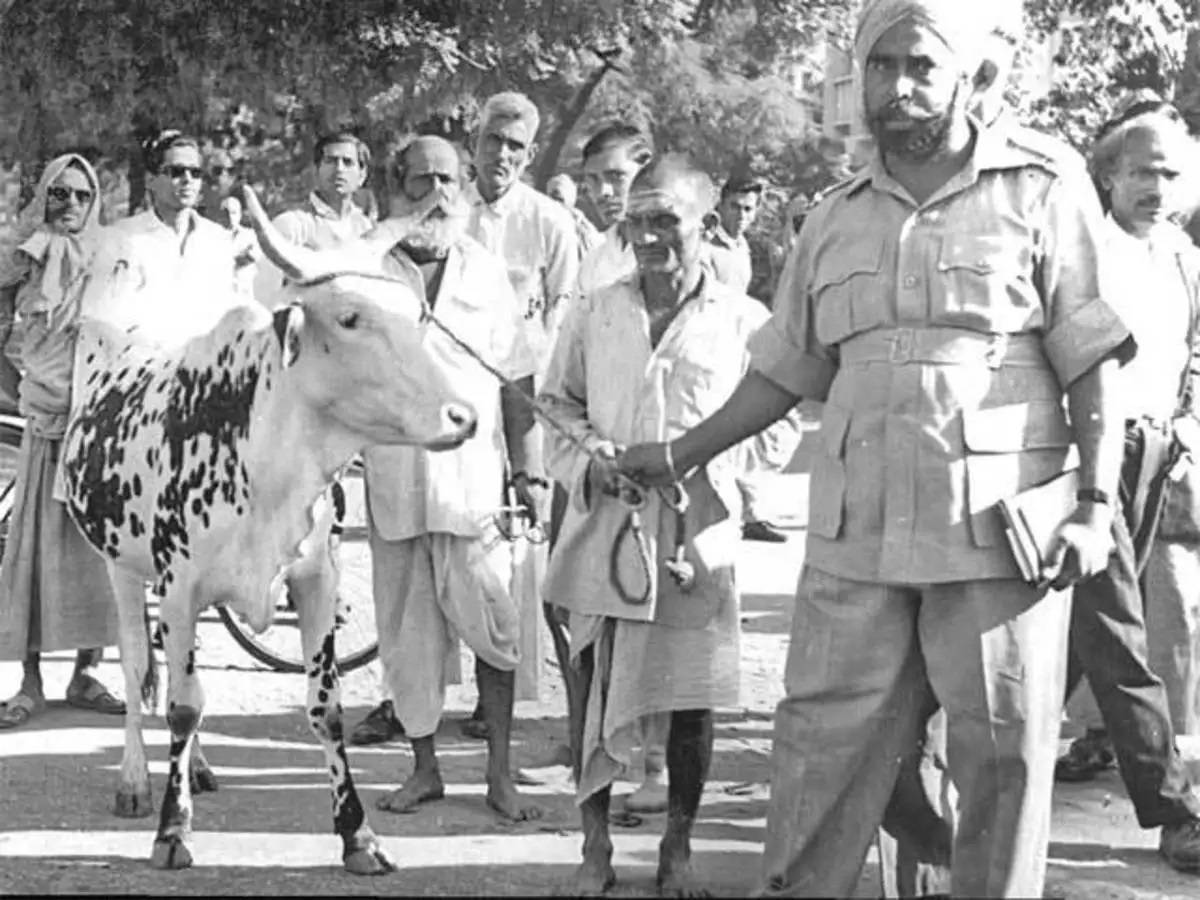 |
Gandhi on Cow slaughter
The most symbolic issue of all concerned the cow and the slaughter of cows.
‘70 (x). Gandhiji on Cow-Slaughter. Gandhiji used to display a most vehement desire for the protection of the cow. But in fact he did no effort in that direction. (…) An extract from his speech in this connection is reproduced below:
“Today Rajendra Babu informed me that he had received some fifty thousand telegrams urging prohibition of cow-slaughter by law. (…) why are so many letters and telegrams sent to me? They have not served any purpose. No law prohibiting cow-slaughter in India can be enacted. How can I impose my will upon a person who does not wish voluntarily to abandon cow-slaughter? India does not belong exclusively to the Hindus. Muslims, Parsees, Christians, all live here. The claim of the Hindus that India has become the land of the Hindus is totally incorrect. This land belongs to all who live here. (…)”’
Hindu and Muslim Princes
‘70 (p). Attitude towards Hindu and Muslim Princes. Gandhiji’s followers successfully humiliated the Jaipur, Bhavnagar and Rajkot states. They enthusiastically supported even a rebellion in Kashmir State against the Hindu prince. This attitude strangely contrasts with what Gandhiji did about the affairs in Muslim States. (…) In a recent casual Hindu-Muslim clash in Gwalior, because the Mussalmans suffered some casualties, Gandhiji came down upon the Maharaja with a vitriolic attack wholly undeserved.’27
70 (v). Ill Advice to Kashmir Maharaja. About Kashmir, Gandhiji again and again declared that Sheikh Abdullah should be entrusted the charge of the state and that the Maharaja of Kashmir should retire to Benares for no other reason than that the Muslims formed the bulk of the Kashmir population. This also stands out in contrast with his attitude on Hyderabad where although the bulk of the population is Hindu, Gandhiji never called upon the Nizam to retire to Mecca.’28
This hardly needs any comment, except that in a way, it confirms Gandhi’s identification with the Hindu side. Combined with his penchant for selfflagellation, this made him treat the Hindus much harsher than the Muslims.
 |
Gandhi's Character
Godse continues his analysis by zooming in even more closely on Gandhi’s role and responsibility in the political equation which led to the Partition.
‘68. This section summarises the background of the agony of India’s Partition and the tragedy of Gandhiji’s assassination. Neither the one nor the other gives me any pleasure to record or to remember, but the Indian people and the world at large ought to know the history of the last thirty years during which India has been torn into pieces by the Imperialist policy of the British and under a mistaken policy of communal unity.
‘(…) virtually the non-Muslim minority in Western Pakistan have been liquidated either by the most brutal murders or by a forced tragic removal from their moorings of centuries; the same process is furiously at work in Eastern Pakistan. One hundred and ten millions of people have become torn from their homes, of which not less than four millions are Muslims, and when I found that even after such terrible results, Gandhiji continued to pursue the same policy of appeasement, my blood boiled, and I could not tolerate him any longer. (…)’
By ‘one hundred and ten millions’ is probably meant ‘one hundred and ten lakhs’, i.e., eleven million, a reasonable estimate of the number of persons displaced by the Partition. By any standard, this wave of refugees amounted to a terrible failure of Gandhi’s policies, yet the Mahatma is not known to have criticized his own policy decisions in terms of their role in the escalation towards Partition.
‘69. The accumulating provocation of 32 years culminating in his last pro-Muslim fast goaded me to the conclusion that the existence of Gandhiji should be brought to an end immediately. On coming back to India [from South Africa], he developed a subjective mentality under which he alone was to be the final judge of what was right and wrong (…)'
Other voices on Gandhi's Character
Shocking as some of Godse’s qualifiers may sound; Godse was not the only one to describe Gandhi as something of a mental case.
During Gandhi’s initial years as Congress leader, prominent spokesmen of the Moderate wing of the nationalist movement called him ‘fanciful’ (V.S. Srinivasa Sastri) and ‘a madman, mad and arrogant’ (Dinshaw E. Wacha), while Annie Besant characterized Gandhi’s 1920 mass agitation (Non-Cooperation, co-opted into the Khilafat Movement) as ‘a channel of hatred’.
Another historian opines: ‘with Lenin he shared a quasi-religious approach to politics, though in sheer crankiness he had much more in common with Hitler (…)
(…) His food policy would have led to mass starvation. In fact Gandhi’s own ashram (…) had to be heavily subsidized by three merchant princes.‘And Gandhi was expensive in human life as well as money. The events of 1920–21 indicated that though he could bring a mass-movement into existence, he could not control it.
Yet he continued to play the sorcerer’s apprentice, while the casualty bill mounted into hundreds, then thousands, then tens of thousands, and the risks of a gigantic sectarian and racial explosion accumulated. This blindness to the law of probability in a bitterly divided subcontinent made nonsense of Gandhi’s professions that he would not take life in any circumstances.’
The sharpest criticism of Gandhi nowadays comes from the so-called Dalit movement, actually only a fringe of genuine Dalit (i.e., Scheduled Caste) politics, along with its allies in Islamist and American Black Muslim circles. They highlight lesser-known facts, such as Gandhi’s sharing the white view of blacks in South Africa—the Mahatma conceived the betterment of the position of the Indians in Natal as essentially lifting them up from equality with the blacks (whom he deemed lustful and lazy) to equality with the whites, without questioning the inequality of black and white.
A very knowledgeable critic of the Mahatma is Jodhpur University philosopher M.M. Kothari, whose book Critique of Gandhi contains a sober survey of the claims made for Gandhi and matching them against the record. This includes a look into some of the morbid aspects of the Great Soul’s personal behaviour, such as his ‘testing his chastity’ by sleeping with under-age girls.
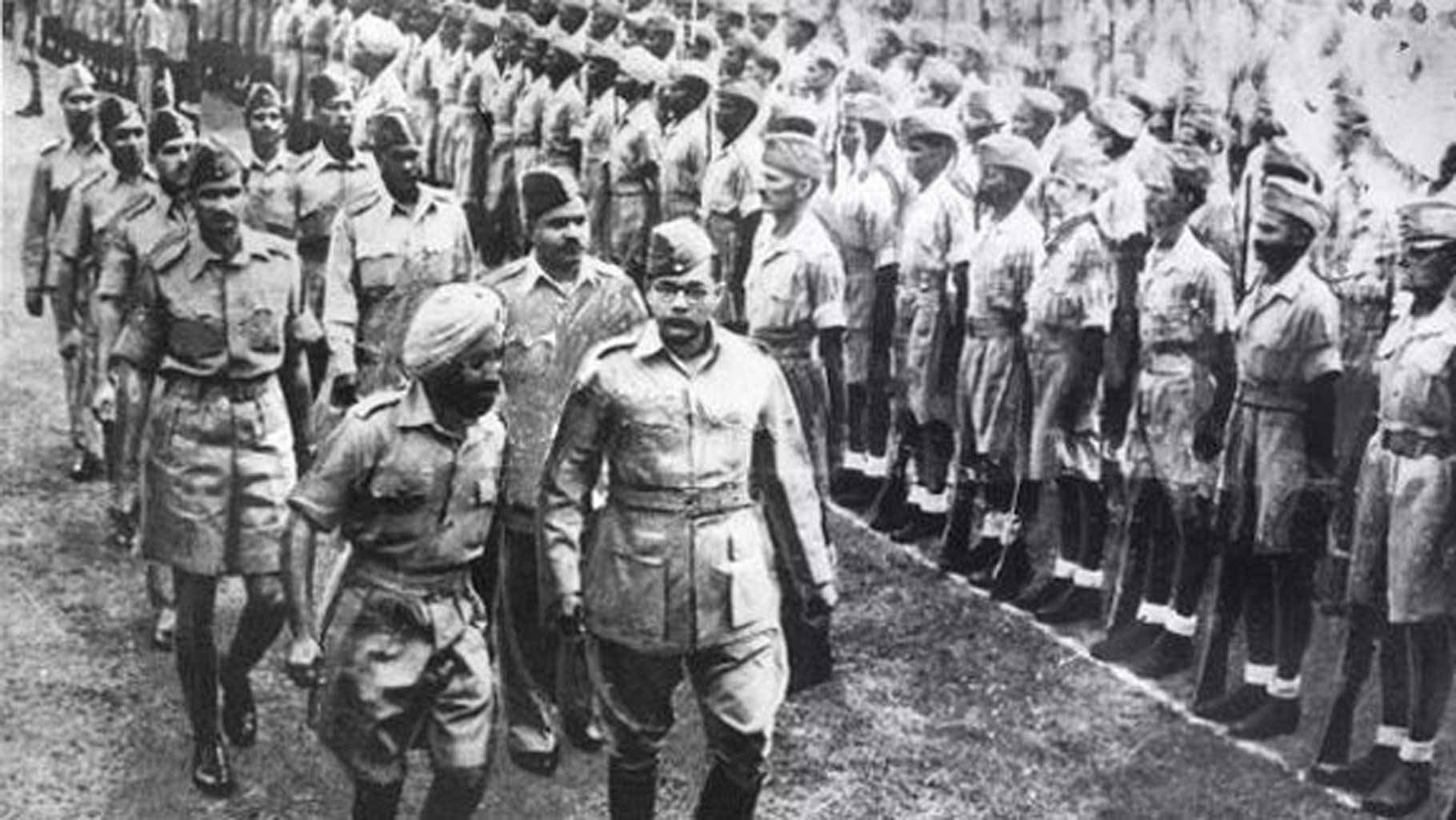 |
Did Gandhi win India's Independence
The remainder of Godse’s statement is mostly a rewording of the same argument, hammering especially at Gandhi’s irrationality and at the irresponsibility of his nonviolence.
‘71. (…) there was never a more stupendous fiction fostered by the cunning and believed by the credulous in this country for over a thousand years. Far from
attaining freedom under his leadership, Gandhiji has left India torn and bleeding from a thousand wounds.’
‘85. (…) I am therefore surprised when claims are made over and over again that the winning of freedom was due to Gandhiji. My own view is that constant pandering to the Muslim League was not the way to winning freedom. It only created a Frankenstein (…) permanently stationing a hostile, censorious, unfriendly and aggressive neighbour on what was once Indian territory.'
Gandhi Vs Bose
One leader who took to armed struggle when the opportunity presented itself was Congress leftist, Subhas Chandra Bose:
‘85 (continued). In my opinion, S.C. Bose is the supreme hero and martyr of modern India (…) advocating all honourable means, including the use of force when necessary, for the liberation of India. Gandhiji and his crowd of selfseekers tried to destroy him.’
‘78. (…) In actual practice, however, Bose never toed the line that Gandhiji wanted during his term of office. And yet, Subhas was so popular in the country that against the declared wishes of Gandhiji in favour of Dr. Pattabhi Sitaramayya, he was elected president of the Congress for a second time with a substantial majority even from the Andhra Desha, the province of Dr. Pattabhi himself. This upset Gandhiji beyond endurance and he expressed his anger in the Mahatmic manner full of concentrated venom by stating that the success of Subhas was his own defeat and not that of Dr. Pattabhi. (…) Out of sheer cussedness, he absented himself from the Tripura Congress session, staged a rival show at Rajkot by a wholly mischievous fast, and [it was] not until Subhas was overthrown from the Congress gaddi that the venom of Gandhiji became completely gutted.’
Godse’s Red Fort trial had been preceded by another Red Fort trial, viz. that of three of Bose’s lieutenants in the Azad Hind Fauz (‘Free India Army’) or Indian National Army (INA), which Bose had formed under Japanese tutelage from among British-Indian Army prisoners in Singapore in 1943. The British had refrained from passing the normal harsh sentence for desertion and treason on them when they saw the immense popularity which the INA enjoyed, basking in Bose’s reflected glory (even Jawaharlal Nehru, who had opposed Bose tooth and nail, offered to serve as their lawyer). The Naval Mutiny of 1946 was a symptom that Bose’s defiance and willingness to take up arms against the British had penetrated the armed forces. The then Prime Minister Clement Attlee was later to declare that this ominous development was decisive in Britain’s decision to decolonize India.
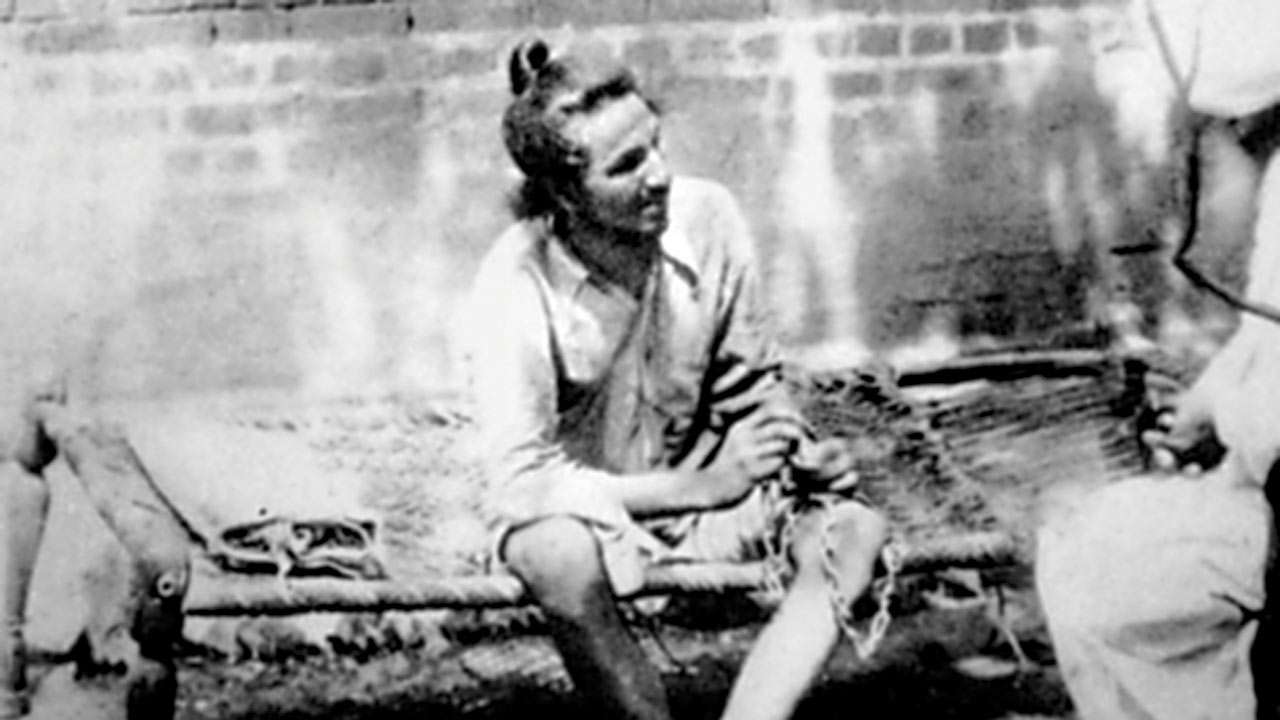 |
Credit to the Revolutionaries
‘86. The real cause of the British leaving this country is threefold and it does not include the Gandhian method. The aforesaid triple forces are:
‘86 (i). The movements of the Indian Revolutionaries right from 1857 to 1932, i.e., up to the death of Chandra Shekhar Azad at Allahabad; then next, the movement of revolutionary character, not that of Gandhian type, in the countrywide rebellion of 1942; and an armed revolt put up by Subhas Chandra Bose, the result of which was a spread of the revolutionary mentality in the Military Forces of India; are the real factors that have shattered the very foundations of the British rule in India. And all these effective efforts to freedom were opposed by Gandhiji. (…)’17
‘77. (…) And the more the Mahatma condemned the use of force in the country’s battle for freedom, the more popular it became. This fact was amply demonstrated at the Karachi session of the Congress in March 1931: in the teeth of Gandhiji’s opposition, a resolution was passed in the open session admiring the courage and the spirit of sacrifice of Bhagat Singh when he threw the bomb in the Legislative Assembly in 1929. (…)
To sum up, the share of revolutionary youth in the fight for Indian Freedom is by no means negligible and those who talk of India’s freedom having been secured by Gandhiji are not only ungrateful but are trying to write false history.’
In Godse’s view, Congress reaped where the revolutionaries had sown. It may reasonably be argued that the British concessions to the Congress leadership were motivated, by the British fear of an escalation of the revolutionary violence if the nonviolent alternative was not rewarded with some successes.
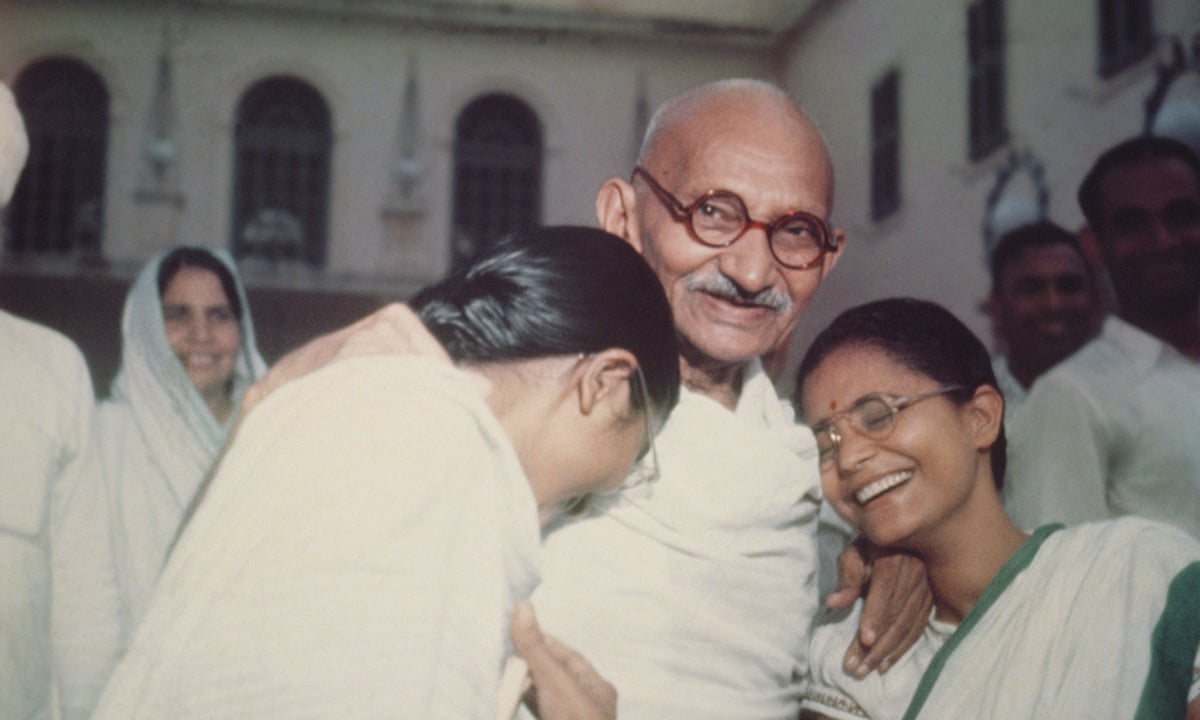 |
The fanaticism of Gandhi
Let us start the criticism of Gandhian non-violence by simply quoting Gandhi in his post-prayer speeches. Godse mentioned these quotes in his plea as well.
‘93(a). (…) Hindus should be never angry against the Muslims even if the latter might take up their minds to undo even their existence. If they put all of us to the sword, we should court death bravely (…) We are destined to be born and die, then why need we feel gloomy over it? (…) (6th April 1947)'
‘93 (b). (…) After the partition, referring to violence against Hindus in Pakistan, Gandhiji said, ‘I asked them why they all came here (to Delhi). Why they did not die there? I still hold on to the belief that one should stick to the place where we happen to live even if we are cruelly treated and even killed. Let us die if the people kill us, but we should die bravely with the name of God on our tongue. Even if our men are killed, why should we feel angry with anybody, you should realise that even if they are killed they have had a good and proper end. (…) (23rd September 1947)'
‘93 (c). (…) If those killed have died bravely they have not lost anything but earned something. (…) They should not be afraid of death. After all, the killers will be none other than our Muslim brothers. Will our brothers cease to be our brothers after change of their religion? (…)’
The lightness with which Gandhi calls on people to give up their lives is simply stunning. At the same time, it is shockingly un-Hindu. This is quite ironical since Gandhiji’s God himself would ask him to fight whenever there’s a decline in righteousness. Hinduism approves of not only dying but also killing in defence of one’s life and honour; it doesn’t reject the use of force in facing the aggressor.
“यदा यदा हि धर्मस्य ग्लानिर्भवति भारत ।
अभ्युत्थानमधर्मस्य तदात्मानं सृजाम्यहम् ॥४-७॥
परित्राणाय साधूनां विनाशाय च दुष्कृताम् ।
धर्मसंस्थापनार्थाय सम्भवामि युगे युगे ॥४-८॥”
He made similar comments to the Hindu refugees from West Punjab, asking them to return home, even if they die in doing so. Hence, not only is Gandhian non-violence misplaced, radical and not in-tune with Hindu teachings, it is also unjustly applicable only when Hindus are subject to communal violence.
Ineffectiveness of non-violence and the Quit India Movement
The first and most obvious instance of the ineffectiveness of non-violence may be the Quit India Movement of 1942. Elst believes that the Quit India movement was the “height of folly given the circumstances”, considering the fact that Britain was at war and had an army at the ready. Hence, the Quit India movement gained Congress nothing but mistrust of the British Government, who sided with the Muslim league more heavily thereafter.
As far as the failure of non-violence in the movement is concerned, Godse says, ’66. In the Province of North Bihar, there was hardly a railway station which was not burnt or destroyed by the Congress non-co-operators; but in spite of all the opposition of the Congress, the Germans were beaten in April, 1945 and the Japanese in August, 1945. (…) The “Quit India” campaign of 1942 had completely failed.’ Not only this, but the suspension of the campaign marked the end of the struggle against Muslim separatism since in return for Office, Congress surrendered to Jinnah and the idea of a separate Muslim state. Gandhi realised his mistake and did penance after the movement, knowing that he could not control the violence ignited by his own campaign.
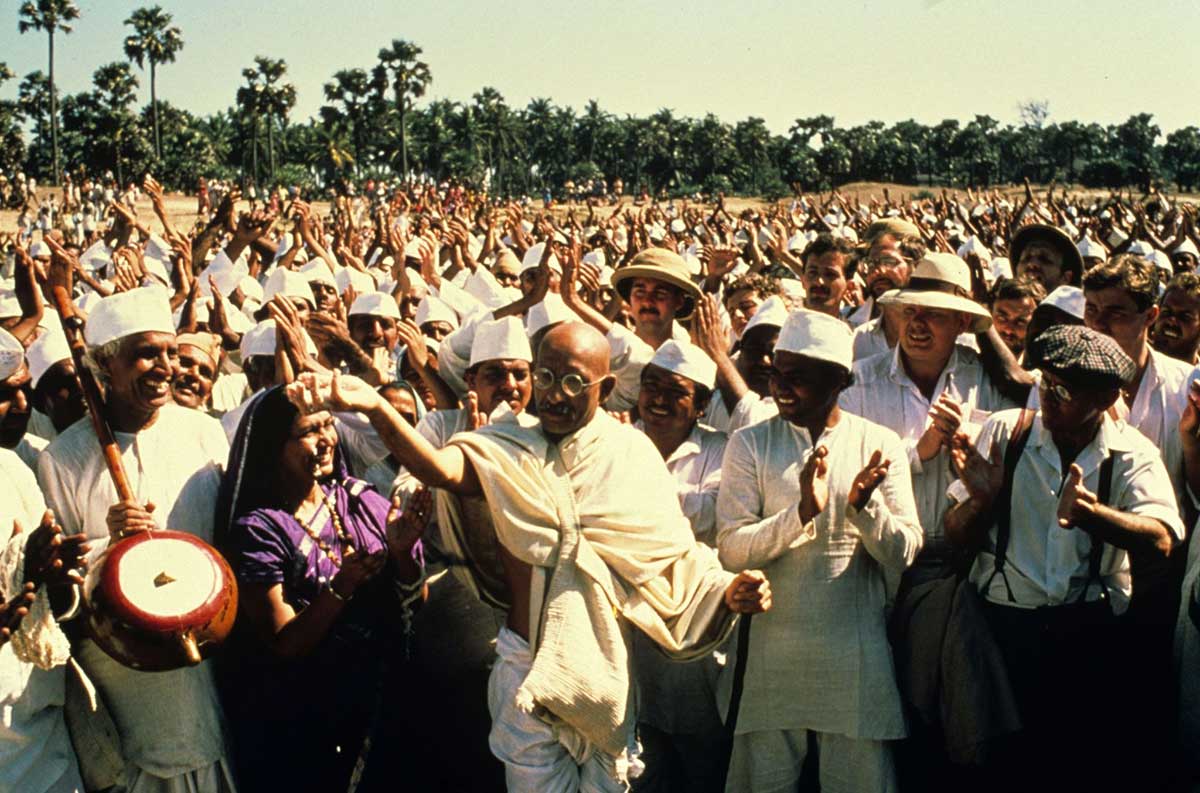 |
Inconsistency of Gandhi’s non-violence
Gandhi himself didn’t adhere to his principles of non-violence in many instances. This was shown in both the World Wars. In the first World War, Gandhi led recruitment efforts for the British army, hence implying his support for a violent and bloody war. In World War II as well, he took up a contract for supplying blankets to the Army from the Congress Khadi Bhandar.
In 1944, India was still a colony and the freedom of its native leaders to determine policy was limited. But after Independence, e.g., during the Pakistani invasion of Kashmir in autumn 1947, there were no excuses left for compromising on the principle of nonviolence. Yet:
‘101. The problem of Kashmir followed very closely that of Pakistan. (…) Pt. Nehru consulted Gandhiji about sending military help to Kashmir and it was only on the consent of Gandhiji that Pt. Nehru sent troops for the protection and defence of Kashmir. (…)’
According to Godse: ‘103. Had Gandhiji [had] a firm belief in the doctrine of nonviolence, he should have made a suggestion for sending Satyagrahis instead of the armed troops and tried the experiment. (…) It was a golden opportunity for Gandhiji to show the power of his Satyagraha (…)
‘104. But Gandhiji did nothing of the sort. (…) Gandhiji was reading the dreadful news of the Kashmir war, while at the same time fasting to death only because a few Muslims could not live safely in Delhi. But he was not bold enough to go on fast in front of the raiders of Kashmir, nor had he the courage to practise Satyagraha against them. All his fasts were to coerce Hindus.’
Godse goes beyond this assessment of Gandhi’s past performance, and claims that the death of Gandhi helped to solve a problem which Gandhi was sure to create or perpetuate had he lived after 30 January 1948, viz. the communal situation in the Muslim-dominated princely state of Hyderabad, where Kasim Rizvi’s Razakar militia terrorized the Hindus:
‘133. (…) It is not at all necessary to refer to the atrocious misdeeds perpetrated by the Nizam’s Ministers and the Razakars. Laik Ali, the Prime Minister of Hyderabad, had an interview with Gandhiji during the last week of January 1948. It was evident from the manner in which Gandhiji looked at these Hyderabad affairs that Gandhiji would soon start his experiments of nonviolence in the State of Hyderabad and treat Kasim Razvi as his adopted son just as Suhrawardy. It was not at all difficult to see that it was impossible for the
Government in spite of all the powers to take any strong measures against a Muslim State like Hyderabad so long as Gandhiji was there (…) for Gandhiji would have gone on fast unto death and Government’s hands would have been forced to save the life of Gandhiji.’
‘135. (…) I felt that Indian politics in the absence of Gandhiji would surely be practical, able to retaliate, and would be powerful with armed forces. No doubt my own future would be totally ruined, but the nation would be saved from the inroads of Pakistan. (…)’
‘138. The problem of the State of Hyderabad which had been unnecessarily delayed and postponed has been rightly solved by our Government by the use of armed force after the demise of Gandhiji.’
Conclusion
Godse said that the ideals of non-violence are ’56. (…) implicit in every constitutional and public movement’, but Gandhiji made his version of non-violence ineffective, absolute and communal and thus, faltered.
 |
Godse's Farewell to Gandhi
Nathuram Godse’s farewell may be quoted here without comment:
‘140. (…) So strong was the impulse of my mind that I felt that this man should not be allowed to meet a natural death so that the world may know that he had to pay the penalty of his life for his unjust, antinational and dangerous favouritism towards a fanatical section of the country. I decided to put an end to this matter and to the further massacre of lakhs of Hindus for no fault of theirs.
May God now pardon him for his egoistic nature which proved to be too disastrous for the beloved sons of this Holy Land.’
‘147. May the country properly known as Hindusthan be again united and be one and may the people be taught to discard the defeatist mentality leading them to submit to the aggressors. This is my last wish and prayer to the Almighty.’
‘149. It is a fact that in the presence of a crowd numbering 300 to 400 people I did fire shots at Gandhiji in open daylight. I did not make any attempt to run away; in fact, I never entertained any idea of running away. I did not try to shoot myself, it was never my intention to do so, for it was my ardent desire to give vent to my thoughts in an open Court.
‘150. My confidence about the moral side of my action has not been shaken even by the criticism levelled against it on all sides. I have no doubt honest writers of history will weigh my act and find the true value thereof on some day in future.
‘Akhand Bharat Amar Rahe!
‘Vande Mataram!’
References:
WhyWhyI Killedthe Mahatma: - Koenraad Elst | Published by Rupa Publications India Pvt. Ltd
 Support Us
Support Us
Satyagraha was born from the heart of our land, with an undying aim to unveil the true essence of Bharat. It seeks to illuminate the hidden tales of our valiant freedom fighters and the rich chronicles that haven't yet sung their complete melody in the mainstream.
While platforms like NDTV and 'The Wire' effortlessly garner funds under the banner of safeguarding democracy, we at Satyagraha walk a different path. Our strength and resonance come from you. In this journey to weave a stronger Bharat, every little contribution amplifies our voice. Let's come together, contribute as you can, and champion the true spirit of our nation.
 |  |  |
| ICICI Bank of Satyaagrah | Razorpay Bank of Satyaagrah | PayPal Bank of Satyaagrah - For International Payments |
If all above doesn't work, then try the LINK below:
Please share the article on other platforms
DISCLAIMER: The author is solely responsible for the views expressed in this article. The author carries the responsibility for citing and/or licensing of images utilized within the text. The website also frequently uses non-commercial images for representational purposes only in line with the article. We are not responsible for the authenticity of such images. If some images have a copyright issue, we request the person/entity to contact us at satyaagrahindia@gmail.com and we will take the necessary actions to resolve the issue.
Related Articles
- If not for Muslim appeasement, Vande Mataram would have been India's National Anthem: the history of Muslim opposition and support
- How Chhatrapati Shivaji Maharaj was establishing Hindu Samrajya by concluding centuries of Islamic oppression - Historian GB Mehandale destroys secular propaganda against Hindu Samrajya Divas
- On 16th Aug 1946, during Ramzan's 18th day, Direct Action Day aimed to provoke Muslims by mirroring Prophet Muhammad's victory at Badr, Gopal 'Patha', the Lion of Bengal, heroically saved Bengali Hindus & Calcutta from a planned genocide, altering history
- Dangers of losing our identity: Guru Tegh Bahadur forgotten and Aurangzeb being glorified
- Speech of Sardar Patel at Calcutta Maidan in 1948 busts the myth of ‘Muslims chose India’ and is relevant even today
- Prophecies of Jogendra Nath Mandal getting real after seventy years of his return from Pakistan
- Moplah Genocide of the Malabar Hindus, 1921: Thousands of Hindus slaughtered
- Narasimha Rao govt brought places of Worship Act as a hurdle in reclaiming ancient Hindu heritage destroyed by Muslim invaders
- Vinayak Damodar Savarkar – A Misunderstood Legacy
- When Secular Nehru Opposed Restoration Of Somnath Temple - The Somnath Temple treachery
- A Great man Beyond Criticism - Martyrdom of Shaheed Bhagat Singh (Some Hidden Facts)
- Let’s remember Karsevaks this Diwali, who laid down their lives for Ram Temple: Ayodhya massacre of Hindu devotees, 2 Nov 1990
- Hindus documented massacres for 1000s of years: Incomplete but indicative History of Attacks on India from 636 AD
- The Islamic Doctrine of Permanent War: Jihãd and Religious Riot
- Why Hindu-Sikh genocide of Mirpur in 1947 ignored? Why inhuman crimes of Radical Islamists always hidden in India?

